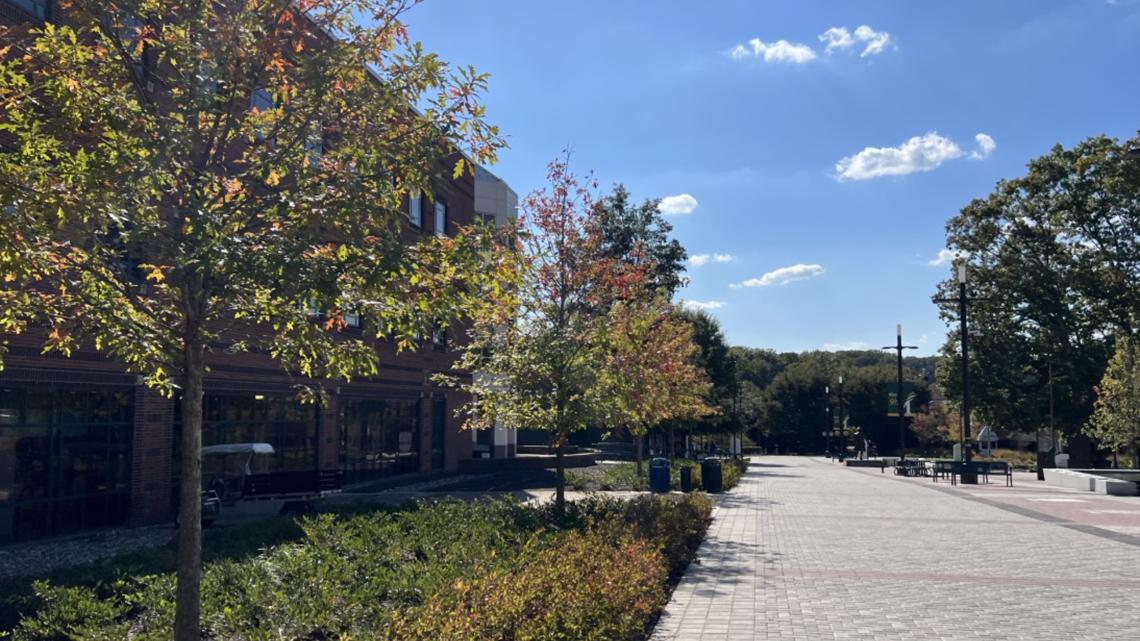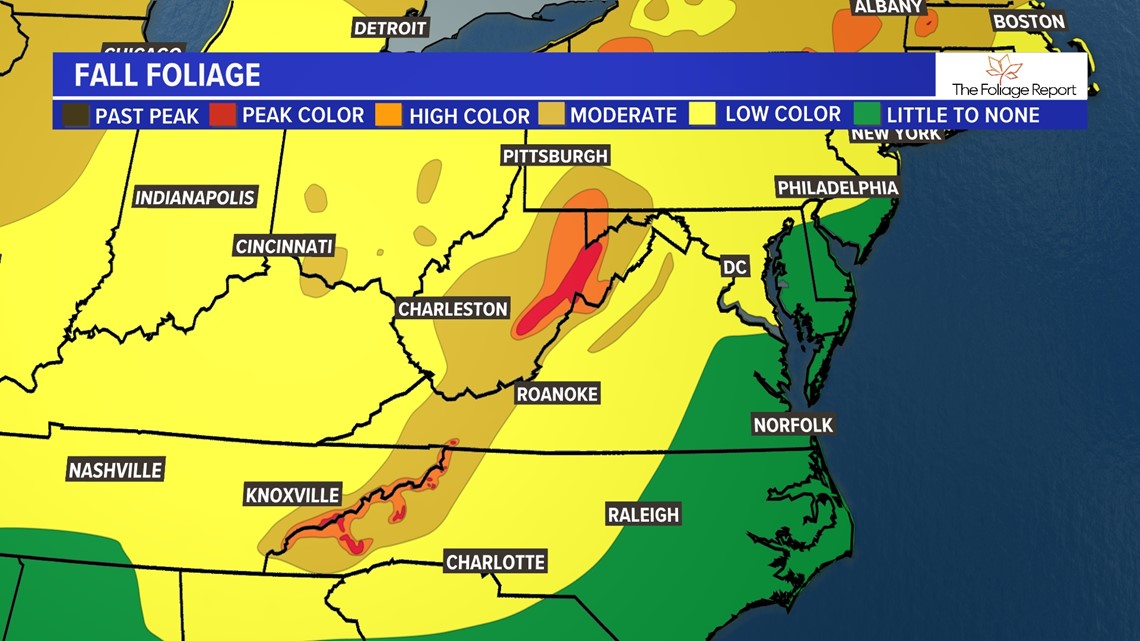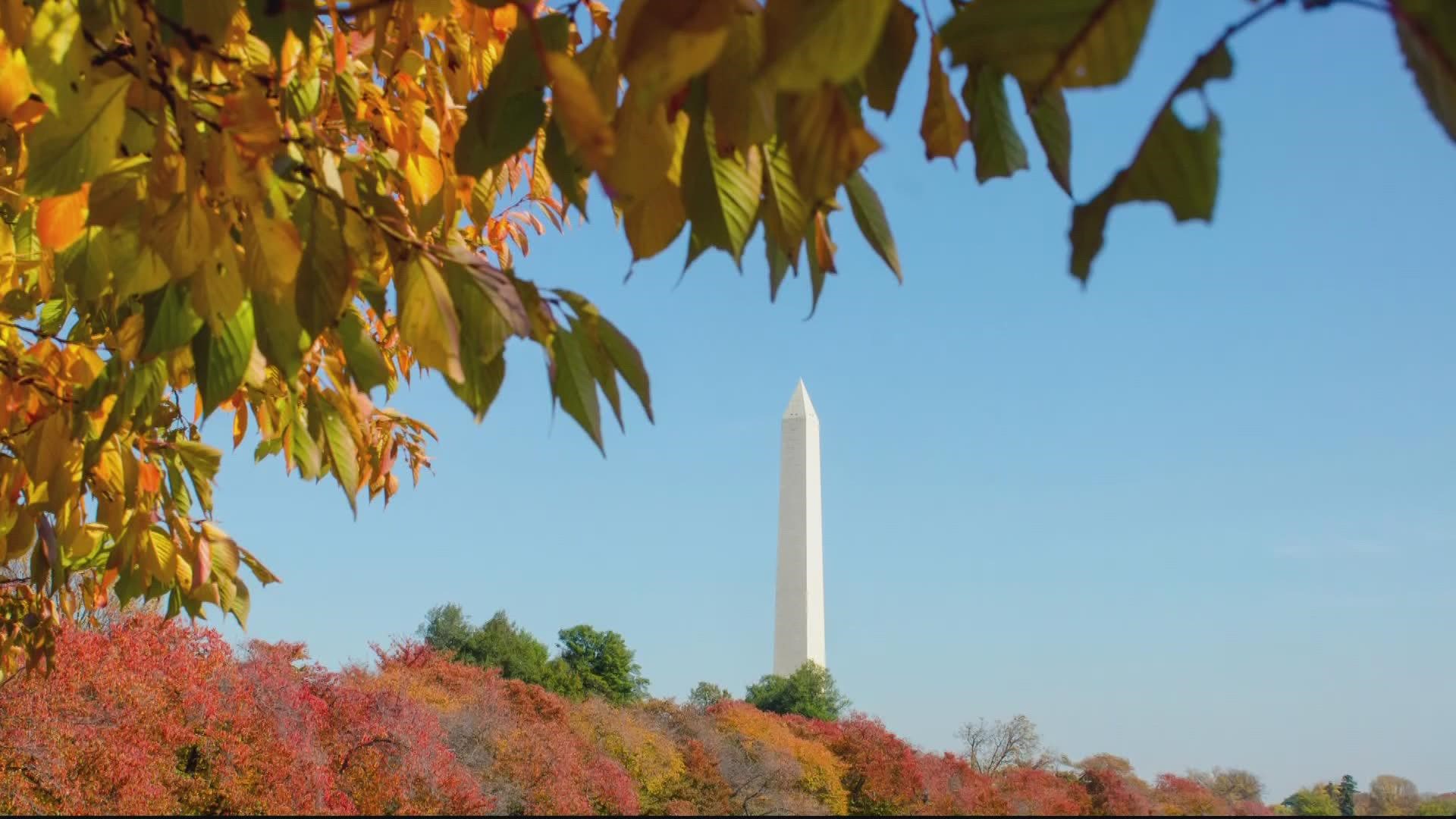WASHINGTON — We still have a couple more weeks until peak fall foliage for most of the DMV but the recent weather may impact when the leaves come down.
We asked students at George Mason University what they like most about fall. Here's what they had to say:
“The way the leaves fall down and get caught in the wind. It’s just so relaxing.”
“Something I like about fall is the cooler weather and the colors of the leaves.”
“I just like stepping on crunch leaves. It’s probably my favorite part. It’s really simple, but I like doing it.”
“It goes from purple to green to red. And it’s just interesting to see how that goes.”
Also interesting is how the short-term and long-term weather can impact fall colors. Rain, sun exposure and temperatures are among the biggest factors affecting foliage. Let's start with rain...or lack thereof.
“Anytime we have water stress, the plant will shut down, and it will drop those leaves,” explains Rebecca Forkner, an Associate Professor of Biology at George Mason University in Fairfax.
And we could see the impacts of drought right on campus.


“So you can see as we move down the slope there’s a drainage with less water downslope," said Forkner. "And the trees that are experiencing that drought are turning earlier.”
Drought impacts not only when leaves fall, but also how bright they become.
Forkner said, “without that water in the fall, we get mostly yellow leaves, brown leaves, [but] not that beautiful red that we often are looking for.”
Between the dry spells we've seen this fall and the cloudy days mixed in, leaves are trending two to three days earlier than normal and the color isn't as bright.


“It's a little bit muted," explained Forkner. "I think in terms of the color, we had cloudy days for at least a span of about four days and that has muted some of the colors that we would expect to see right now. We're also a little warmer, so I'm waiting for those 40-degree evenings combined with some really sunny days to produce that brilliant color that we'd like to see.”
And leaves turning earlier and earlier is a trend the lab at George Mason University has seen over the past 150 years. Using data dating back to 1820, they've found about half a day to a quarter of a day advance per year due to some drying.
The colorful leaves are coming earlier, but not necessarily staying longer.
“In some cases also have an increase in temperature, when we have an increase in temperature along with an increase in water, we can see an extension of the growing season," says Forkner. "And that's what most climate models have been predicting is that we'll have green leaves for longer in the year.”
While money doesn't grow on trees, trees can bring in a lot of money. A 2015 report by the United States Department of Agriculture stated that the New England area receives an estimated 8 billion dollars annually in local revenue from fall tourism, an industry that relies on the well-being of trees.
And you can help scientists track the health of trees just by using your cell phone. When you’re out in nature just snap a picture of trees and upload it to iNaturalist so that they can access the data.

